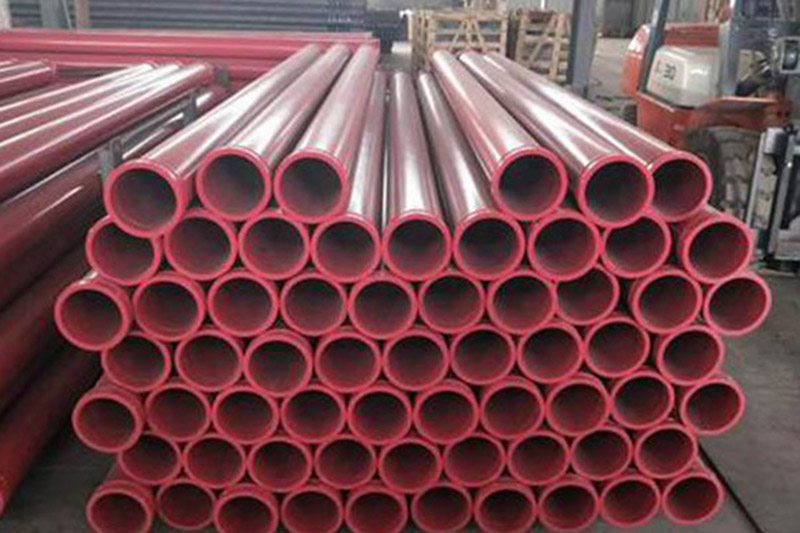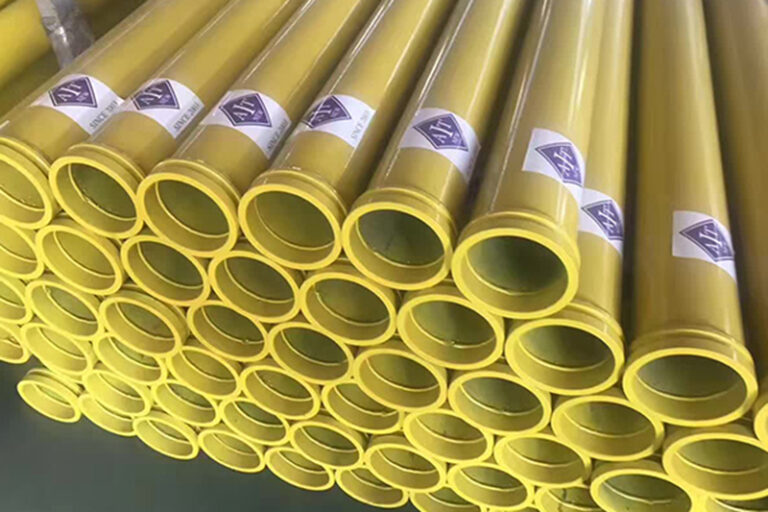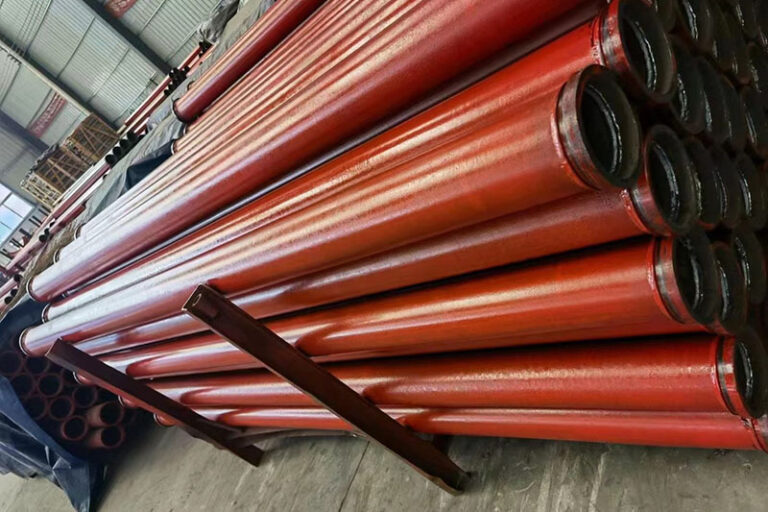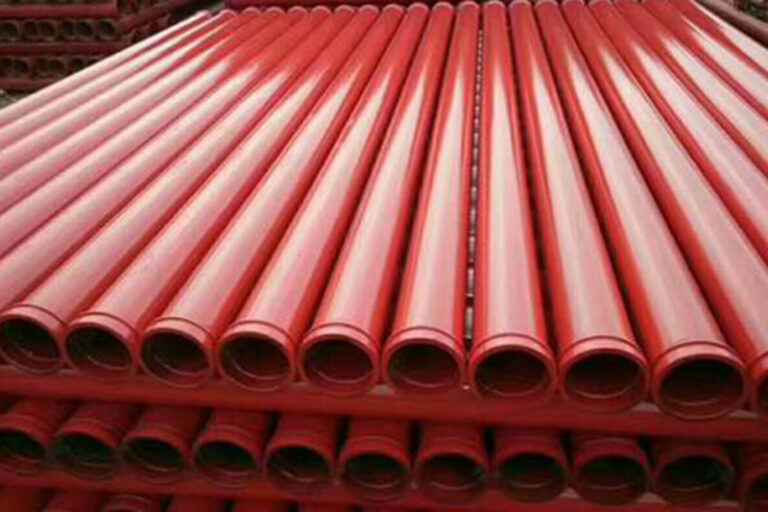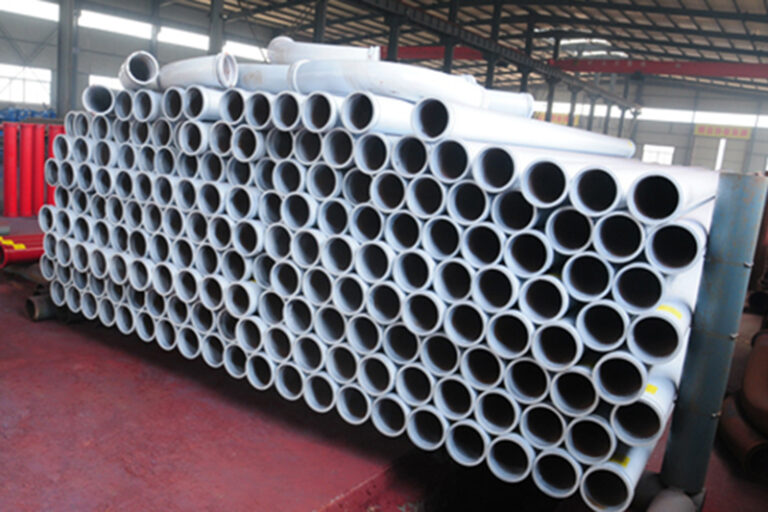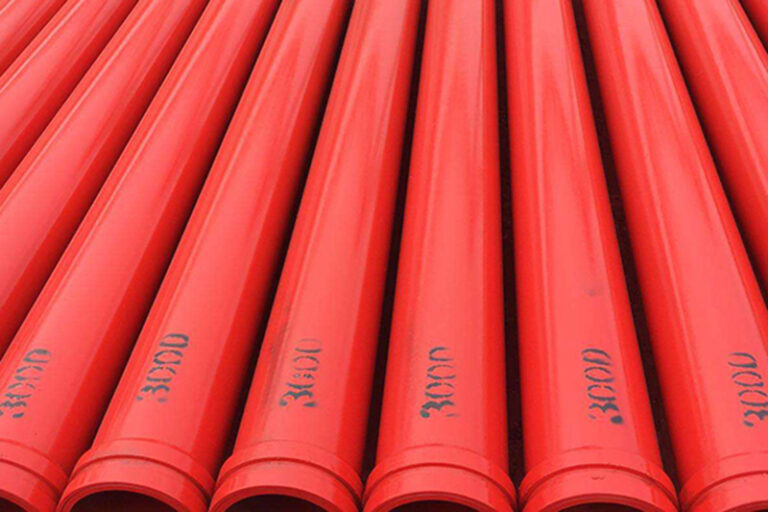What are the specifications of concrete pump pipelines?
As an indispensable conveying equipment accessory in modern building construction, concrete pump pipe’s specification selection directly affects concrete conveying efficiency and project quality. This article will systematically introduce the main classification of concrete pump pipe, common specifications and sizes, as well as the application of different scenarios, to help engineers fully understand this key construction component.

Basic Classification of Concrete Pump Pipe
Concrete pump pipe can be divided into three categories according to the use of scenarios and functional characteristics: ground pump pipe, wear-resistant pipe for pump trucks and mortar pump pipe.
Ground pump pipe is the abbreviation of concrete transfer pump pipe, which is divided into two kinds of truck pump pipe and ground pump pipe. Truck pump pipe includes boom pipe, hinge elbow, reducer and elbow, mostly made of cast steel casting; while the ground pump pipe is made of ordinary carbon steel, processed by fluid pipe or straight seam pipe.
Wear-resistant pipe for pump truck (also known as pump truck boom pipe, car pump pipe) is specially installed on the pump truck boom, through which concrete is transported to a specific height and distance.
Mortar pump pipe belongs to the cantilever type single-stage single-suction centrifugal pump special pipeline, designed for conveying corrosive media containing fine particles. Each of these three types of pumping pipe plays its own role, and plays an irreplaceable role in concrete construction.
Common concrete pump pipe specifications and size parameters
The mainstream specifications of concrete pumping pipes are mainly divided into two types: 125 and 150, each of which is further subdivided into high-pressure and low-pressure models.47 The low-pressure model of 125 pumping pipes has an external diameter of Φ133mm, while the high-pressure model has an external diameter of Φ140mm; the low-pressure model of 150 pumping pipes has an external diameter of Φ159mm, while the high-pressure model has an external diameter of Φ168mm.4 The connecting end of these pipes is equipped with a specially processed flange, the 125 low-pressure pumping pipe has a flange with a flange with a special processing. The flange diameter of 125 low-pressure pump pipe is 148mm, while the flange diameter of 125 high-pressure pump pipe reaches 157mm2.
In terms of diameter range, concrete pump pipes can be categorized into fine (below 125mm), medium (between 125mm and 150mm) and coarse (above 150mm).6 Specific diameter specifications commonly available in the market include 125mm, 150mm, 175mm, 180mm, 200mm, 225mm, 230mm and 250mm.56 In terms of wall thickness, the Pump pipes are usually available in a variety of options such as 2mm, 2.5mm, 3mm, 3.25mm, 3.5mm, 3.75mm, 4mm, 4.5mm, 5mm, 7mm and even 11mm.568 The greater the wall thickness, the greater the pipe’s pressure-bearing capacity.

Concrete pump pipe specification selection and application scenarios
Different specifications of concrete pump pipe are suitable for different construction scenes and types of equipment.125 low-pressure pump pipe is the most common specification, most of the concrete pumps and pump trucks, hand-operated placing machines are used in this kind of pipeline.125 high-pressure pump pipe is dedicated to ground pumps (tractor pump) and truck-mounted pumps.150 pump pipe is mostly used in the concrete secondary pouring equipment and mining pumps, which pump trucks are more common on the 150 high-pressure pump pipe.80 mortar pump pipe is specially designed for sand and mortar pumps. 80 mortar pump pipe is designed for mortar pump, mainly used for floor heating backfill construction.
When choosing pump pipe specifications, it is necessary to comprehensively consider the concrete conveying distance, vertical height, pumping speed and equipment performance and other factors.5 Generally speaking, the conveying distance, the vertical height of the project should be selected high-pressure models and larger wall thickness of the pump pipe; while the conventional construction of the standard low-pressure models can be used. At the same time, in the process of use need to regularly check the status of the pump pipe, timely replacement of badly worn pipes, to ensure the safety of conveying.
Comparison of common concrete pump pipe specifications
Type Outer diameter (mm) Flange diameter (mm) Applicable equipment Main purpose
125 low-pressure Φ133 148 most concrete pumps, pump trucks, placing machines conventional concrete conveying
125 high pressure Φ140 157 floor pump, truck mounted pump long distance/high pressure conveying
150 low-pressure Φ159 175 secondary pouring equipment, mining pump large flow conveying
150 high-pressure Φ168 184 Sany pumps and other high-pressure high-flow conveying
80 mortar Φ89 98 mortar pump floor heating backfill construction
